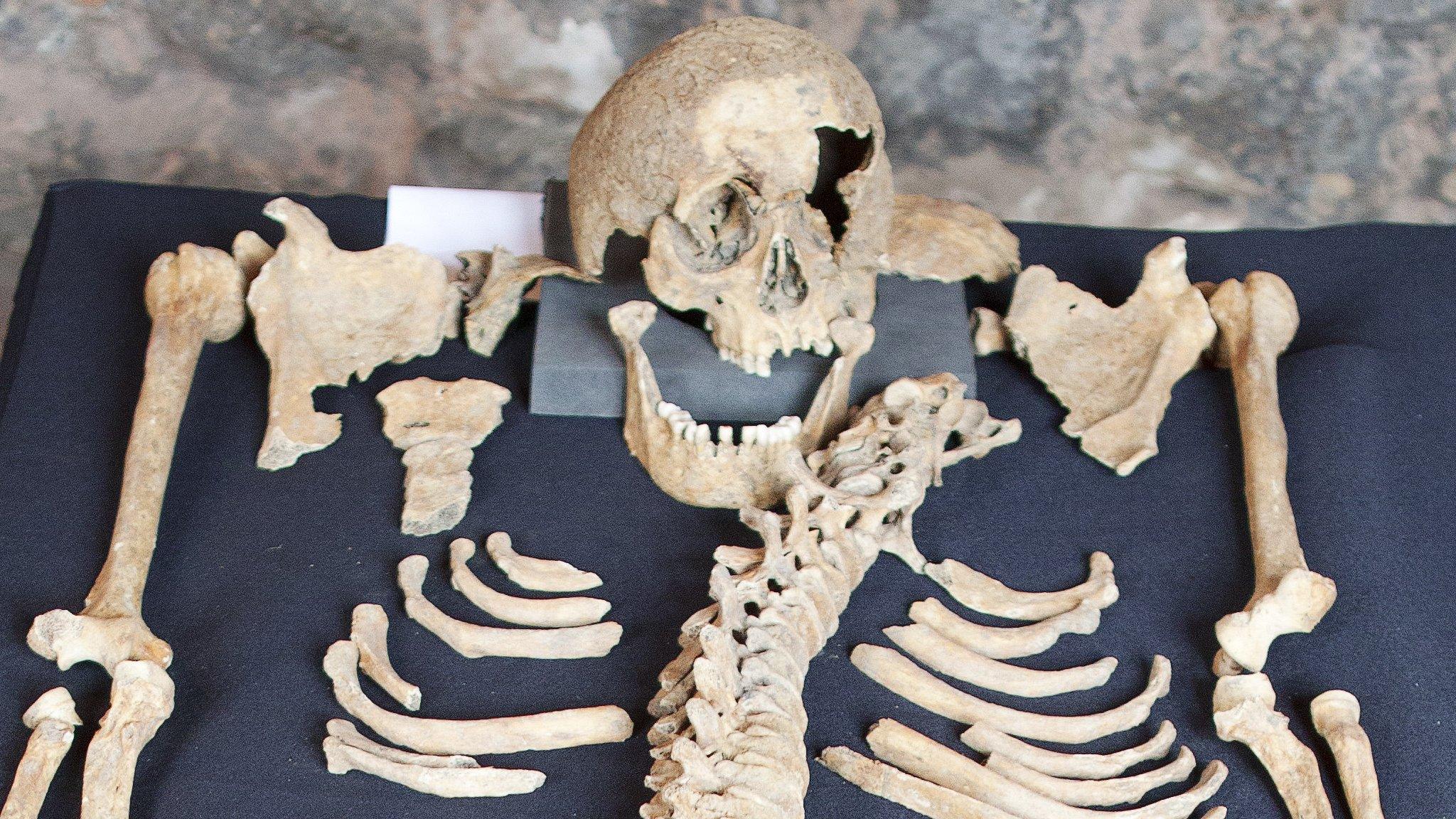Richard III burial: Should his remains stay on display?
- Published
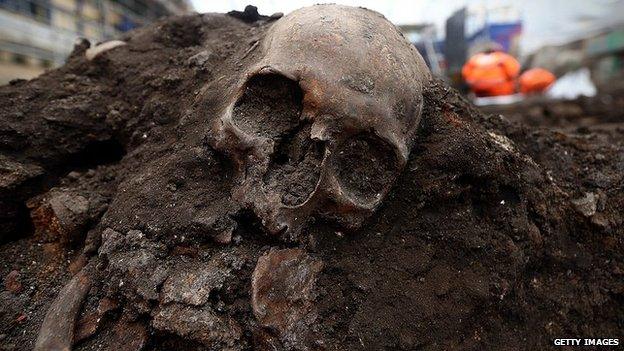
Human remains found in other circumstances remain on display in museums
The reburial of Richard III at Leicester Cathedral is set to be a lavish affair befitting a king. But why are his bones being interred when other historically significant skeletons are kept on display in museums?
In July 1545, Henry VIII's warship the Mary Rose sank while leading the attack on a French invasion fleet. Most of the 500-strong crew are believed to have perished.
To this day, some remain untouched in their watery graves at the bottom of the Solent. Others, however, ended up in a more public resting place.
Along with the Tudor ship being raised in 1982, the remains of 179 of the crew have been recovered - and a handful of skeletons are on display at the Mary Rose museum in Portsmouth, alongside models of how they might have looked in life.
So why do we put some human remains back in the earth, but keep others where we can see them?
It was a dilemma faced by archaeologists working on London's £16bn Crossrail project, external when they unearthed a cemetery for hundreds of victims of the Black Death, a medieval epidemic that killed millions.
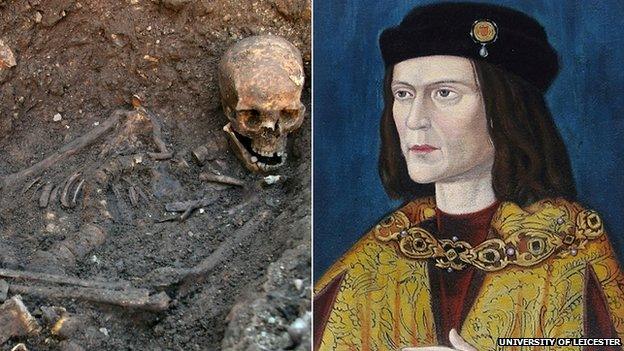
It is rare for archaeologists to find the skeleton of a named individual
"Black Death burials had been found before but now we have the techniques to find what caused it," said the team's leader Jay Carver.
"There is an assumption, agreed by English Heritage and the Church of England, that remains should be reburied - unless there is a clearly demonstrated research value to retaining them.
"This is a bit of a grey area, because who knows what advances in analysis are round the corner?
"There is an archaeological argument that these are extremely important and they should not be returned to the ground to turn to dust."
The skeletons are now displayed in temporary exhibitions about Crossrail, but Mr Carver said their long-term fate was "undecided".
Archaeologists who worked on the excavation of skeletons from the Battle of Towton - fought just 24 years before Richard's death at Bosworth - make a similar case.
Dr Jo Buckberry, lecturer in Biological Anthropology at the University of Bradford, said reburying the bones would be a mistake.
"While we did not know their names, we know exactly when they died and why they were there," she said.

Mary Rose
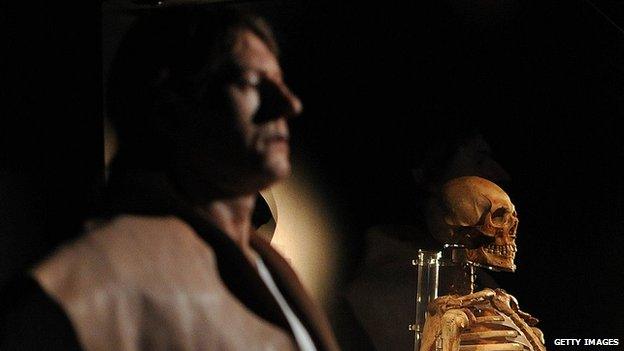
The Mary Rose Museum displays bones alongside belongings and physical reconstructions
One of Henry VIII's principle warships, she sank at the beginning of a battle with the French fleet on 19 July 1545 in the Solent.
The wreck was rediscovered in 1971 and salvaged in 1982, proving to be a time capsule of seafaring life preserved in the seabed mud.
A £35m purpose-built museum, external to display the ship and its relics was opened in Portsmouth Historic Dockyard in May 2013.

"They are such a rich source of information about past lives and living conditions and they will keep providing that information.
"Most had multiple injuries, some were struck several times with their skulls smashed - what we would call overkill.
"Some of the bones have been displayed but they are always shown with respect and with the relevant information to show why they are there."
So is there an argument for keeping Richard III's remains on display in a museum?
Modern analysis, the stuff of science fiction just 20 years ago, can tell us where Richard grew up and what he ate. Who knows what secrets and stories his bones would yield in the future if they were not sealed in a tomb?
In the case of the Mary Rose, some of the skeletons found on the wreck are still on display, accompanied by personal belongings and facial reconstructions.
Alex Hildred, a curator at the Mary Rose Museum, said: "It is fundamentally a human story and you can't tell it without them."
But others strongly disagree.
"It brings to mind a Victorian freak show," said Mike Fletcher, who campaigns against the practice.

Legal questions
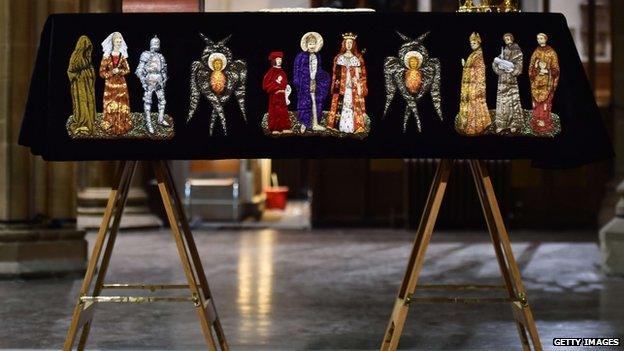
Richard III is being reburied at Leicester Cathedral
In the 1990s, museums faced mounting pressure to hand back remains taken during the colonial era. But removing objects from a collection - called deaccessioning - was at the time specifically blocked by legislation.
However a section of the 2004 Human Tissue Act, external allowed this in certain cases and the British Museum, external and Natural History Museum, among others, returned remains to Australia and New Zealand.
The 2004 act controls the handling of remains less than 100 years old but older specimens are dealt with under the Burial Act of 1857, external.
This regulated the exhumation of remains and reburials in cemeteries but left the fate of stored bodies unresolved
Deaccessioning and demands for UK pre-Christian bones, external to be reburied led to a wider discomfort with the display of all human remains. Some exhibits were removed, external, others covered.

"You are putting someone on display because they show some interesting characteristics. That person didn't expect to end up like that and has no say in what has happened to them."
Mr Fletcher, from the group Honour the Ancient Dead (Had), added: "While some museums handle remains well, other institutions don't even know what human remains they have in store.
"I know of places where they have plastic boxes with piles of skulls in them and other bones stacked next to them - it's a very varied landscape".
While Had campaigns mainly for the reburial of prehistoric bodies, external, it believes similar respect should be extended to all uncovered remains.
So does the team which has worked with Richard III regret having to put him in a tomb?
Speaking ahead of the reinterment, Dr Jo Appleby, who excavated the skeleton and has conducted much of the work on the bones, said: "We have done a lot of work on him in the last two years and found out a huge amount.
"I actually feel the time is right for him to be laid to rest in the cathedral - it is exactly what should be happening".
- Published26 March 2015
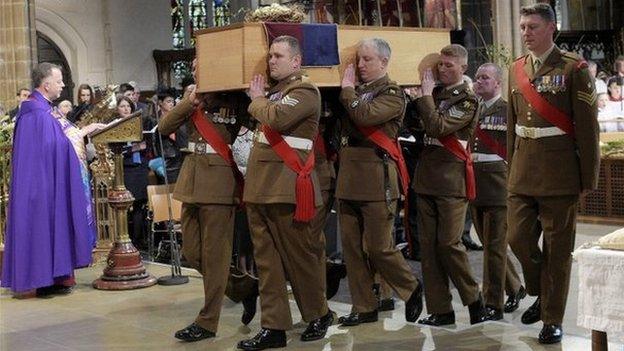
- Published10 March 2015
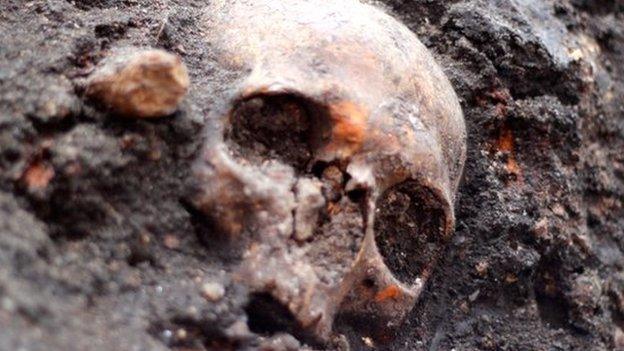
- Published30 March 2014
